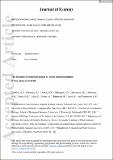Files in this item
The dynamics of vegetation grazed by a food-limited population of Soay sheep on St Kilda
Item metadata
| dc.contributor.author | Crawley, M.J. | |
| dc.contributor.author | Pakeman, R.J. | |
| dc.contributor.author | Albon, S.D. | |
| dc.contributor.author | Pilkington, J.G. | |
| dc.contributor.author | Stevenson, I.R. | |
| dc.contributor.author | Morrissey, M.B. | |
| dc.contributor.author | Jones, O.R. | |
| dc.contributor.author | Allan, E. | |
| dc.contributor.author | Bento, A. | |
| dc.contributor.author | Hipperson, H. | |
| dc.contributor.author | Asefa, G. | |
| dc.contributor.author | Pemberton, J.M. | |
| dc.date.accessioned | 2022-11-02T00:40:27Z | |
| dc.date.available | 2022-11-02T00:40:27Z | |
| dc.date.issued | 2021-11-02 | |
| dc.identifier | 275997092 | |
| dc.identifier | 8a163060-6617-4b6e-a951-1eb00acef3bb | |
| dc.identifier | 85118320813 | |
| dc.identifier | 000713562200001 | |
| dc.identifier.citation | Crawley , M J , Pakeman , R J , Albon , S D , Pilkington , J G , Stevenson , I R , Morrissey , M B , Jones , O R , Allan , E , Bento , A , Hipperson , H , Asefa , G & Pemberton , J M 2021 , ' The dynamics of vegetation grazed by a food-limited population of Soay sheep on St Kilda ' , Journal of Ecology , vol. Early View . https://doi.org/10.1111/1365-2745.13782 | en |
| dc.identifier.issn | 0022-0477 | |
| dc.identifier.other | RIS: urn:4DCEACC94AB316CAC882305A78C94C3B | |
| dc.identifier.uri | https://hdl.handle.net/10023/26289 | |
| dc.description | The long-term project on St Kilda, including field assistant Jill Pilkington, has been largely funded by the UK Natural Environment Research Council and for one period by the Wellcome Trust. | en |
| dc.description.abstract | 1. The population of Soay sheep on the island of Hirta in the Outer Hebrides has been the subject of continuous study for more than 35 years. This paper focuses on the botanical aspects of the plant-herbivore interaction, showing how the vegetation affects and is affected by the sheep. 2. Grazing impacts on biomass and spatial structure varied across plant communities, with Holcus/Agrostis grasslands affected most and Wet Heath least, consistent with the hypothesis that herbivore impacts are proportional to plant productivity. 3. Within plant communities, the negative relationships between sheep numbers and plant abundance (sward height, gap/tussock cover and biomass) were significant in March but not significant in August, as expected if sheep numbers are limited by food supply in winter. 4. In most species, flower stem density declined with increasing sheep numbers. There were no examples where unpalatable plants showed increased flowering (e.g. from competitor release under selective grazing). 5. Plant production in temporary grazing exclosures (above ground net primary production) was greatest in Holcus/Agrostis grassland (12.6t/ha dry matter/year), lower in Nardus grassland (5.1t/ha/yr) and least in Plantago sward (1.3t/ha/yr) associated with differences in historical nutrient supply and microclimate. 6. The net effect of grazing on plant species richness was positive: a few highly palatable species were excluded, but small-scale coexistence of grazing tolerant species was enhanced by defoliation. 7. The Soay sheep population fluctuated from 908 (in 1988) to 2208 (in 2009), increasing by an average of 39 extra animals per year over the period 1985-2011. Between 2011 and 2020, the population fluctuated less widely and showed no trend. 8. Population change (ln(N(t+1)/N(t)) was inversely density dependent but positively correlated with plant production in Holcus/Agrostis grassland which increased during the study. 9. This plant-herbivore interaction is highly resilient, and though some species (Festuca rubra and Ranunculus acris) declined in the Holcus/Agrostis grassland, there was no significant upward trend in the abundance of unpalatable plant species. 10. Synthesis. Implications for future studies and analyses of plant-herbivore data. Concentrating on estimating primary productivity and herbivore offtake, rather than simply measuring change in plant biomass, is likely to provide greatly improved explanatory power for understanding herbivore population dynamics. | |
| dc.format.extent | 22220263 | |
| dc.language.iso | eng | |
| dc.relation.ispartof | Journal of Ecology | en |
| dc.subject | Flowering | en |
| dc.subject | Grazing | en |
| dc.subject | Palatability | en |
| dc.subject | Plant-herbivore dynamics | en |
| dc.subject | Primary productivity | en |
| dc.subject | Soay sheep | en |
| dc.subject | St Kilda | en |
| dc.subject | GE Environmental Sciences | en |
| dc.subject | SB Plant culture | en |
| dc.subject | SF Animal culture | en |
| dc.subject | 3rd-NDAS | en |
| dc.subject.lcc | GE | en |
| dc.subject.lcc | SB | en |
| dc.subject.lcc | SF | en |
| dc.title | The dynamics of vegetation grazed by a food-limited population of Soay sheep on St Kilda | en |
| dc.type | Journal article | en |
| dc.contributor.institution | University of St Andrews. School of Biology | en |
| dc.contributor.institution | University of St Andrews. Centre for Biological Diversity | en |
| dc.contributor.institution | University of St Andrews. St Andrews Bioinformatics Unit | en |
| dc.identifier.doi | https://doi.org/10.1111/1365-2745.13782 | |
| dc.description.status | Peer reviewed | en |
| dc.date.embargoedUntil | 2022-11-02 |
This item appears in the following Collection(s)
Items in the St Andrews Research Repository are protected by copyright, with all rights reserved, unless otherwise indicated.

